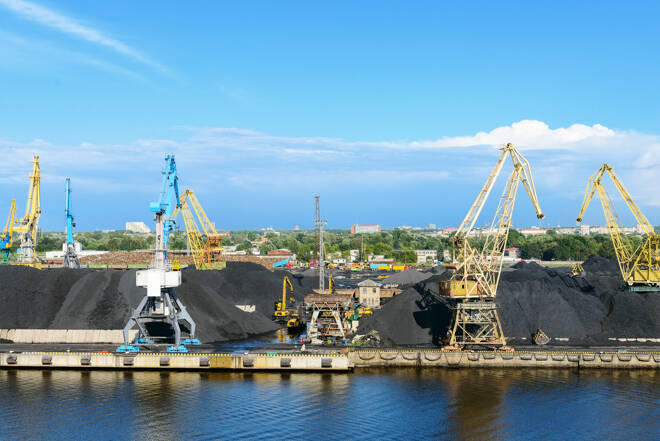Advertisement
Advertisement
Gas and Coal Reaching Levels that Destroy Demand and Growth
By:
The global energy crisis continues to gather momentum, and since the Chinese government issued its "whatever cost" order last week, the price of Dutch TTF gas, the European benchmark had by early Wednesday surged more than 80% to EUR 155 per MWh, before witnessing a sharp correction to EUR 115, reflecting an increasingly difficult market situation.
The focus on ESG and green transformation has reduced producers’ normal long-cycle capex response to surging prices and rising demand. Without a response from producers, the only other option is for prices to reach levels that triggers demand destruction, and that is the phase we have now entered.
The global energy crisis continues to gather momentum, and since the Chinese government issued its “whatever cost” order last week, the price of Dutch TTF gas, the European benchmark had by Wednesday surged more than 80% to €155/MWh, before witnessing a sharp correction to €115, reflecting an increasingly difficult market situation. While no shortages have yet been detected, the market is currently being driven by panic and increasingly worse market conditions with regards to the level of liquidity.
Low stockpiles of most fuels across the world, and limited time left to replenish stocks before the peak demand season, has left consumers around the world increasingly exposed to a supply crunch should we end up with a colder than normal winter. With gas and coal now trading at demand destructive levels, we are seeing the next stage of this energy crunch with production being curbed and Brent crude oil trading above $80 for the first time in three years on the prospect for increased substitution demand for oil-powered generation.
The rally which started in Europe several months ago has during the past months been spreading like a wildfire to the rest of the world. The combination of gas in short supply, and lower-than-expected power generation from solar and wind has forced utilities to buy coal in order to maintain the required baseload across the electrical grid.
Concerns about fuel shortages this winter increased further after China’s Vice Premier Han Zeng last week ordered the country’s top state-owned energy companies to secure supplies for this winter at all costs. China is, just like the rest of the world, running low on fuels to get them through the winter. The central bank and government-sponsored overstimulation of the global economy during the past 18 months led to a surge in demand for consumer goods, many of which are produced in China.
The result has been surging shipping costs, supply chain disruptions and a jump in Chinese and global electricity demand, which derives from either coal, gas, nuclear, hydro or renewables. In addition China has been challenged by its rigid and low on-grid power tariff which has led to power shortages with coal plants shutting down production instead of losing money buying expensive coal to produce electricity at a loss.
In energy management the term baseload, is the permanent minimum load that a power system is required to produce in order to meet fundamental electricity demands by customers. In the past that baseload was provided by conventional power plants such as coal and nuclear plants, but with the green energy transformation in Europe, many of these conventional power plants has been shut down and replaced with renewable energy production, and with gas being the go-to fuel when production from renewables drop.
To put the current elevated prices in Europe into perspective, the price of Dutch TTF first month gas earlier today reached a record €155 per MWh or $52.5 per MMBtu or around eight times higher than the average seen during the previous five years. German power prices for 2022 delivery have risen to €155 per MWh and more than 4X the five-year average. Tight supply of gas has forced power generators to turn to coal, thereby driving the price of coal delivered at Rotterdam to a multi-year high earlier today at $182 before retracing to the current $165 per tons.
An easing of the current squeeze could come from several developments:
- A milder than expected winter
- High prices forcing a reduction in demand, especially from energy intensive production, thereby stabilizing the storage situation.
- Gazprom completing its reinjection into domestic storage facilities by the end of this month, thereby freeing up more flows to Europe
- Nord Stream 2 pipeline receives approval to ship gas directly to Germany
- EU policymakers introducing temporary measures reducing emissions costs
The European Union, however, said on Wednesday it would scrutinise its power market design and consider proposals to revamp EU regulation, as the bloc seeks to keep its plans to tackle climate change on track amid record-high energy costs
In conclusion, the old saying that the best cure for a high price is a high price may not work this time round. The focus on ESG and green transformation has reduced producers’ normal long-cycle capex response to surging prices and rising demand. Without a response from producers, the only other option is for prices to reach levels that triggers demand destruction, and that is the phase we have now entered. The result being a sharp reversal of the growth fest seen this past year and the realization inflation is anything but transitory.
This article is provided by Saxo Capital Markets (Australia) Pty. Ltd, part of Saxo Bank Group through RSS feeds on FX Empire
About the Author
Ole Hansencontributor
Ole Hansen joined Saxo Bank in 2008 and has been Head of Commodity Strategy since 2010.
Advertisement
